InOrder
A Mobile POS App Tailored for Small-Scale Restaurants
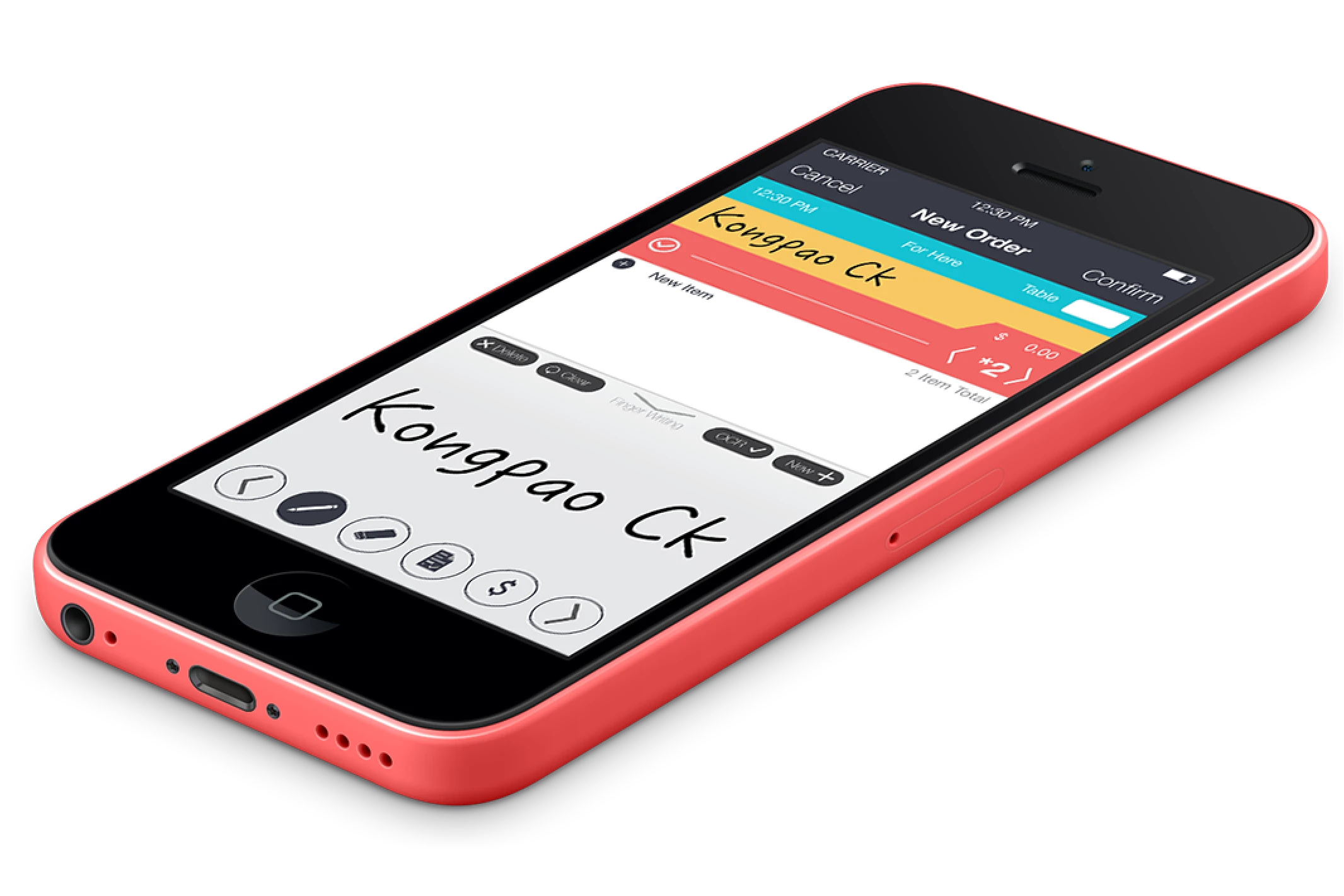
Background
Understanding the Market & Identifying Gaps
San Francisco boasts an impressive density of restaurants, outpacing any other city in the United States on a per-capita basis. This is further complemented by the city's diverse demographic fabric, where Asians make up 33% of the population. This confluence sets the stage for a multitude of Asian restaurants, each vying for a piece of the market share.
Based on Polywell's business reports, there has long been an intriguing phenomenon: small Chinese and Asian restaurants are rarely keen on implementing POS systems, a stark contrast to their Western counterparts. While POS systems form a significant part of Polywell's offerings, they've never been the core focus, accounting for just 10% of the business. As a result, the company has not undertaken extensive research to decode this reluctance. However, the lingering question has always been there: Why are Chinese restaurants so averse to adopting POS systems?
In the midst of this uncertainty, I recognized that the issue might not solely be a matter of marketing but could involve user experience considerations. This realization prompted me to initiate an in-depth research project to uncover the underlying issues.
Intriguing Observations
Leveraging my prior experience with a company specializing in POS systems, along with extensive visits to various Asian restaurants, several patterns began to emerge:
- **Staffing Constraints:** Despite good business, these restaurants tend to operate with minimal waitstaff, which is especially noticeable during peak hours.
- **Extensive Menus:** Surprisingly, even small Asian restaurants offer a wide array of dishes, adding complexity to the ordering and preparation process.
- **Low POS Adoption:** A surprisingly low number of these establishments utilize POS systems, an essential tool for enhancing operational efficiency.
The incongruence between the evident benefits of POS systems and the low adoption rate among these restaurants raises a compelling question. What barriers are inhibiting these resourceful business owners from optimizing their operations through available technology? This project is an endeavor to explore and resolve these challenges.
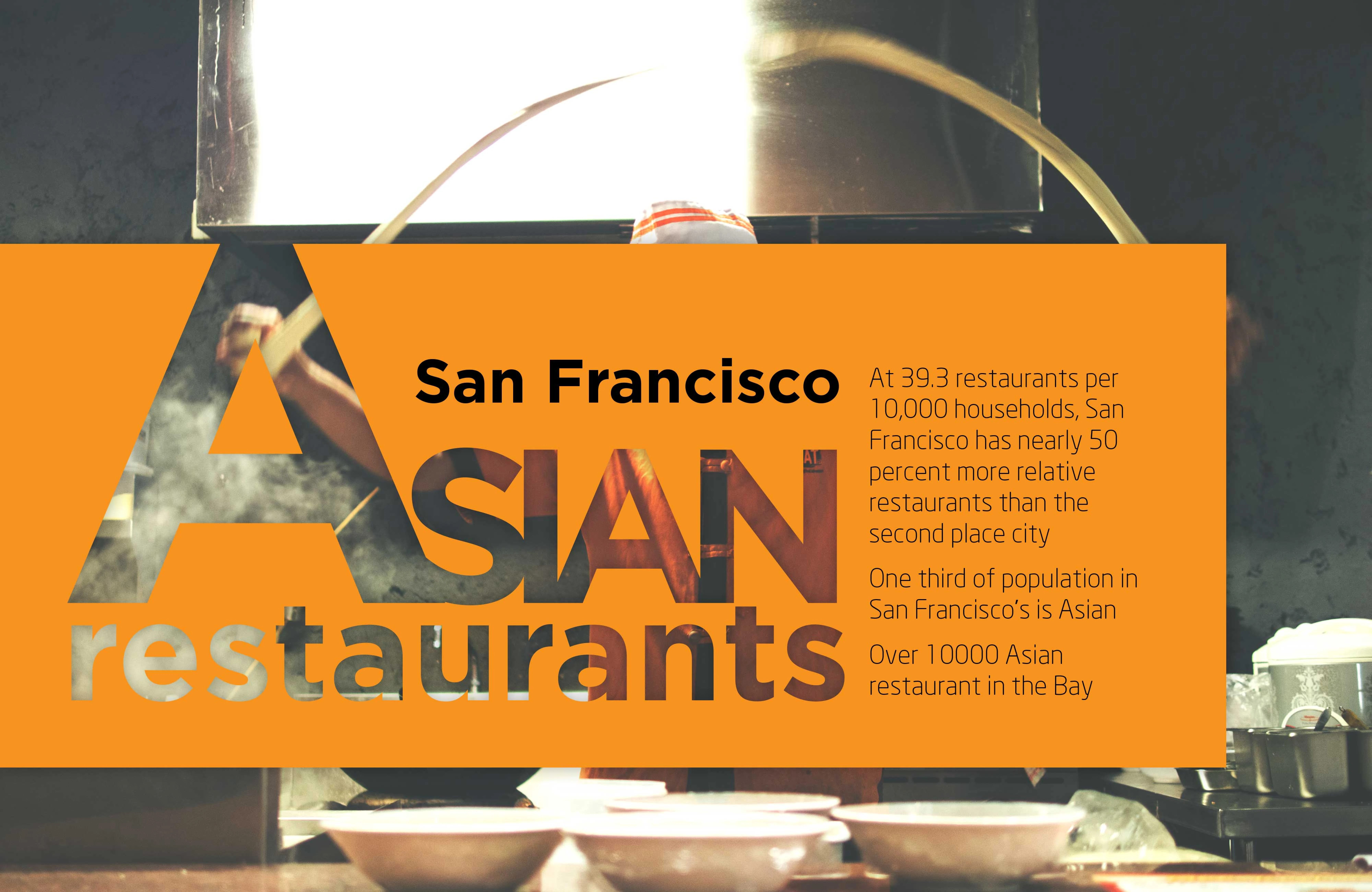
Research
A Deep Dive - Immersion in a Local Restaurant
While initial efforts to gain insights from a consumer's lens proved limited, my experience in dining at these establishments only offered a glimpse into operational challenges. Staff were often too busy to offer substantive responses, and proprietors were wary when approached with direct questions. Traditional interview techniques only scratched the surface.
Realizing the need for a deeper understanding, I took an unconventional route: I became part of the scene by accepting a part-time waiter position at a local Chinese restaurant. Over a span of three months, this immersive experience granted me unprecedented access to the inner workings of the business.
This strategic shift enriched the depth of my research, transforming my relationships with the staff and management and offering a ground-level perspective that had previously been elusive.
**Key Discoveries:**
- **Staffing & Costs:** Salaries for waitstaff are among the biggest financial commitments for restaurants, prompting many—especially small-scale Chinese ones—to operate with a minimal crew to keep costs down.
- **Division of Labor:** With fewer hands on deck, job roles aren't specialized. Staff members find themselves multitasking—taking orders, serving food, clearing tables, and even assisting in kitchen tasks. This lack of role differentiation becomes an operational bottleneck, especially during high-traffic periods.
- **Owner's Reluctance to Adopt POS:** The owner's perspective proved most illuminating, giving life to prior assumptions.
"They cost too much money. They have maintenance fee, and if you want change menu, more cost. Many people come try sell me machine. I watch how they use, they are just slower. I'm doing business not charity."
- Shared my previous employer.
These in-depth insights, gathered first-hand, serve as the cornerstone of this project, providing a focused direction for the design and development of a POS system that addresses these unique challenges.
Barriers to POS Adoption
Though POS systems are viewed as a one-time investment, my research and firsthand experience revealed multiple layers of complexity that deter restaurant owners:
- **Staff Turnover:** These restaurants often rely on part-time staff, leading to frequent personnel changes and thereby complicating training on new systems.
- **Learning Curve:** The plethora of available POS systems each come with their unique learning curves, adding a layer of hesitancy to adoption.
- **Language Barrier:** Kitchen staff in many Asian restaurants are not proficient in English, which makes it challenging to implement English-based POS systems effectively.
- **Native Language Preference:** To ensure kitchen staff understand orders accurately, waiters often communicate in their native languages, negating the advantages of an English-based POS system.
- **Location Inconvenience:** POS systems are usually stationed at the cashier's table, a placement that proves inconvenient for waitstaff who also have duties in the kitchen.
- **System Dependence:** Once a POS system is adopted, the entire operation becomes reliant on it, causing apprehension among owners who are wary of this level of commitment.
Through this immersion and study, a complex tapestry of cultural, operational, and financial factors came to light, offering a multifaceted view of why POS system adoption is limited in small Chinese restaurants.
Ideation
Mobile Solutions for Streamlining Staff Movement
In the era of 2014, when smartphones were becoming a staple in everyone's pocket, I saw an opportunity for transformation. My on-the-ground experience pointed to one glaring inefficiency that seemed universally present across Asian restaurants: the considerable "random walking" distance covered by waitstaff as they moved between the kitchen, cashier, and tables. This challenge, I believed, could be substantially mitigated through the clever utilization of mobile technology.
The Overarching Challenge
In a hectic environment, every step counts. Waitstaff in Asian restaurants were constantly on the move, juggling multiple roles and tasks. The physical toll and time consumed in these unnecessary movements were significant. It begged for a solution that would minimize this constant back-and-forth.
Supporting Challenges
While the primary issue was clear, it was complicated by several secondary challenges:
- **Learning Curve:** Existing POS systems presented a steep learning curve, especially for those unfamiliar with such technology or those who do not speak English.
- **Workflow Compatibility:** Conventional POS systems often clashed with existing restaurant procedures, making integration difficult.
- **Language Barriers:** Key staff members like chefs or family members who run the business often had limited English proficiency, making it challenging to implement English-based systems.
Ideation Framework
Building on these insights, I formulated a set of design criteria aimed at addressing both the primary and secondary challenges:
- **Efficiency in Movement:** The design should prioritize functionalities that would minimize staff movement.
- **Ease of Use:** The interface should be intuitive, reducing the time needed for staff training.
- **Language Inclusivity:** The system should accommodate those with limited English skills through visual cues or multilingual support.
Towards a Mobile POS Solution
Given these considerations, I envisioned a POS system that could seamlessly integrate with Poliwell Computer's existing product line, creating a cost-effective and user-friendly solution. My proposed system would operate via smartphones, leveraging their wireless capabilities to anchor staff where they are most needed, rather than at a fixed point of sale.
The innovation wouldn't stop at software alone; a small assortment of hardware enhancements would also play a pivotal role. These complementary hardware elements would be strategically introduced to optimize workflow and create a synergistic solution that benefits both the company's sales goals and the end-users' experience.
The touchscreen capabilities of smartphones also opened up the possibility of incorporating handwriting recognition. This feature would make the system even more accessible to non-English speakers and those unfamiliar with conventional POS systems, further widening its applicability.
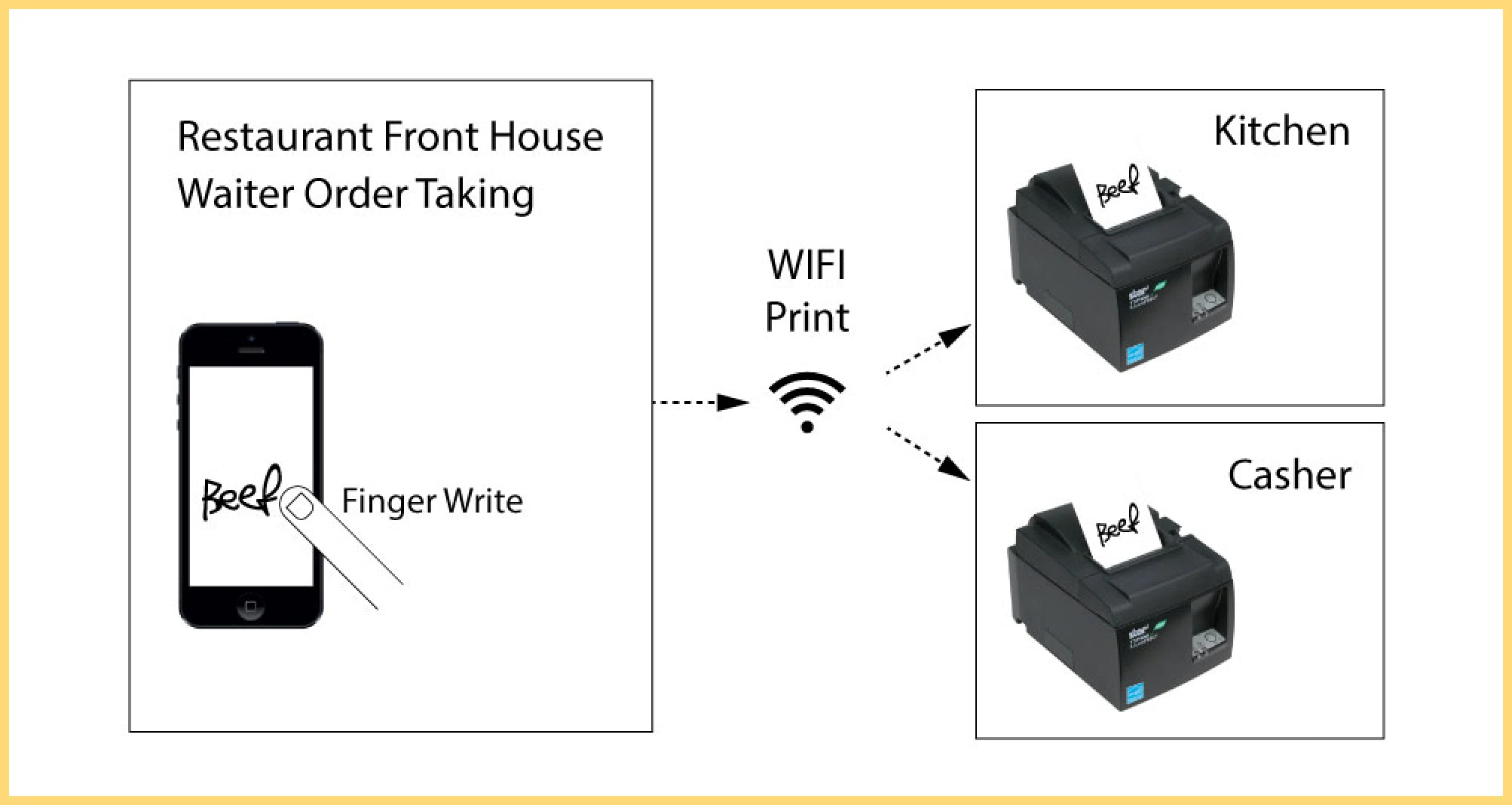
The initial solution concept
Design
In this phase, the abstract ideas and requirements coalesce into concrete visual elements. Through iterative design practices and constant collaboration with stakeholders, I shaped an interface that not only serves the functional needs but also provides a delightful experience for the users.
Personas
Personas act as the cornerstone of any user-centric design process. For this project, I developed two key personas: the Business Manager and the Waiter. These personas were crafted based on extensive research and direct work experience, allowing for a nuanced understanding of the needs, pain points, and aspirations of each role. It is through the lens of these personas that every design decision was made, ensuring the final product is both functional and empathetic.
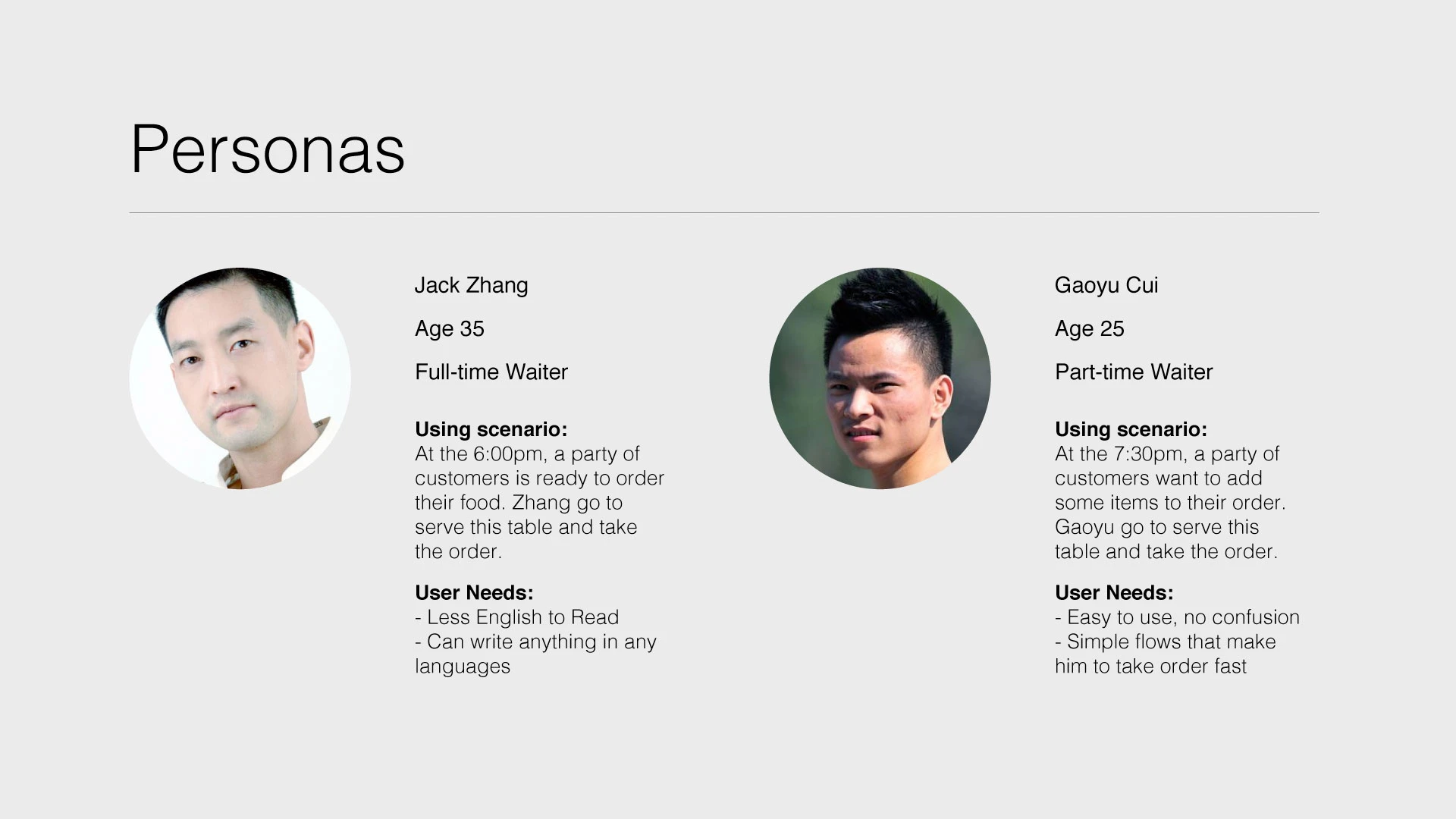
Personas created
Structure
The structural design phase is where the project's skeleton is built. Here, I focus on establishing the information architecture and layout, prioritizing ease of use and logical navigation. Utilizing Poliwell Computer's existing product-line as a base, I ensured that the structure of the mobile app would integrate seamlessly, delivering an intuitive and user-friendly experience without reinventing the wheel.
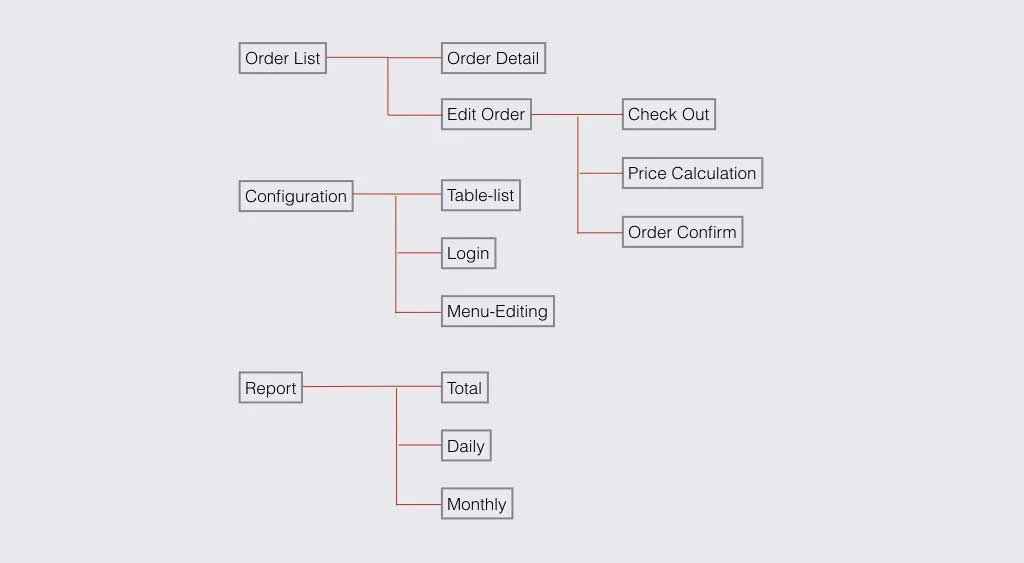
App structure
Wireframes
Wireframing is an essential step in creating a user-centered design. I used this phase to visualize the user flow and interaction patterns, paying special attention to minimizing the 'random walking' and enabling quick, efficient actions. These wireframes served as a blueprint, guiding not just the look and feel but also the functionality of the interface.
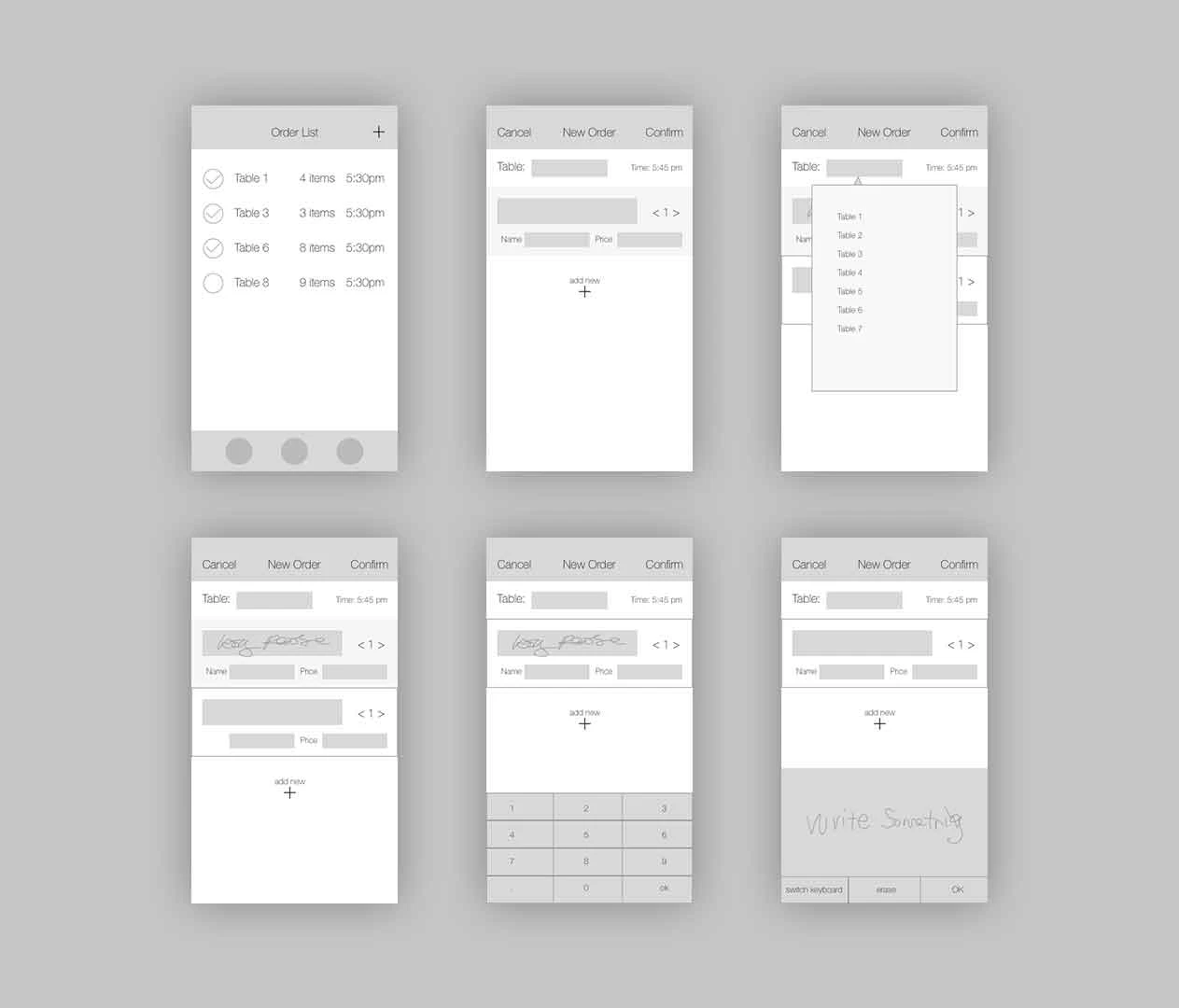
Wireframes
Hi-fi Screens
High-fidelity screens are the culmination of all the work done in the previous stages. At this point, the focus shifts to aesthetics, fine-tuning the UI components, and implementing the visual language consistently across the application. Here, the design crystallizes into its final form, ready to be tested and eventually deployed.
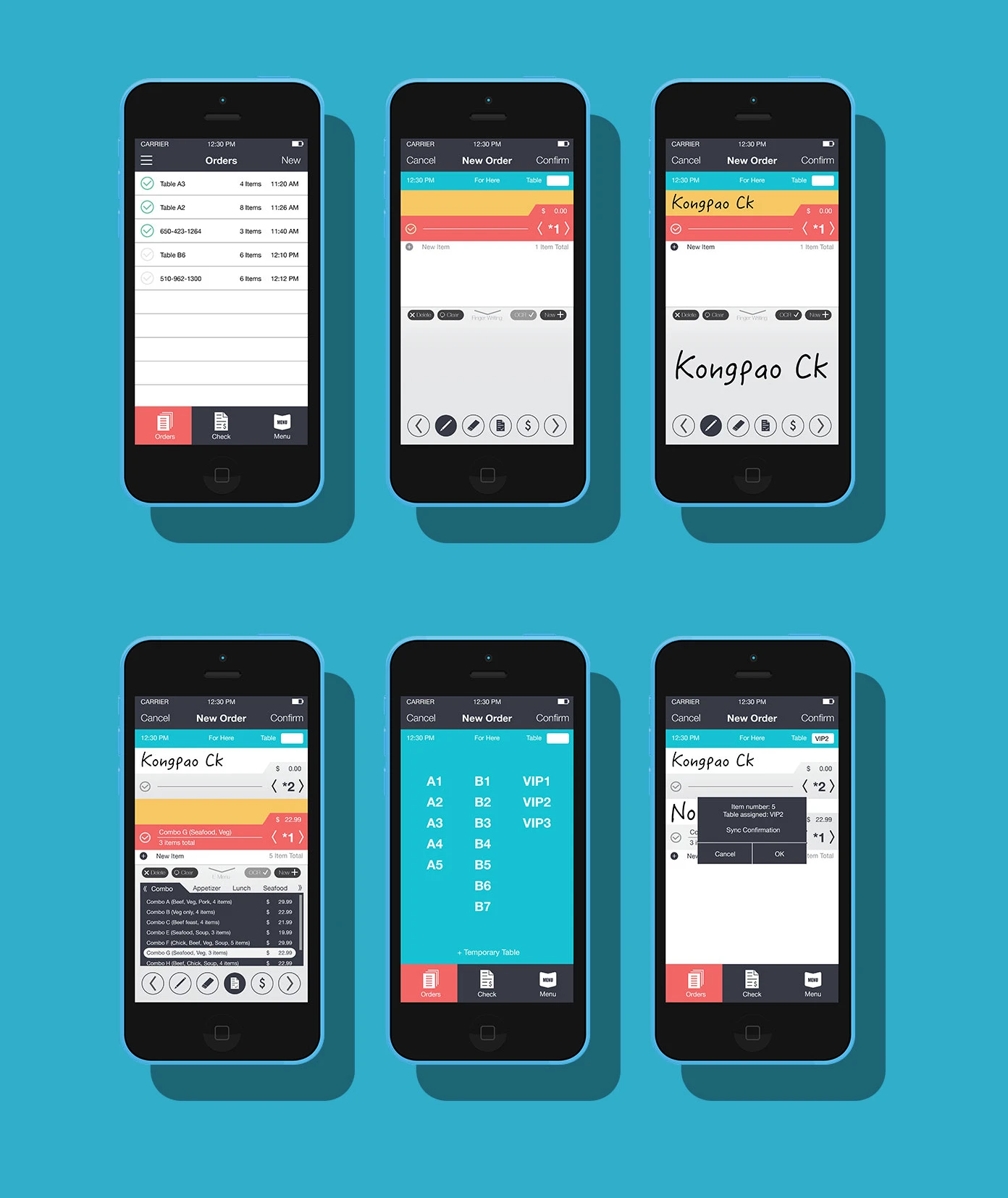
Main UI pages
Concept Video
Insights & Learning
The inOrder project wasn't just a milestone in my design journey; it was a practical lesson in transforming theoretical design concepts into actionable solutions with real-world impact. Upon completion, the project saw a simplified iteration actually get developed by Polywell Computers, confirming the viability of my design choices, even though it is a bundled product and not publicly available in app stores. This experience significantly elevated my ability to weave together technical aptitude and empathetic problem-solving.
My decision to take on a part-time job at a local Chinese restaurant turned out to be an instrumental research method. This immersive experience offered me nuances and intricacies that typical user interviews or surface-level observations could never capture. It emphasized the need to dig deep into the 'why,' not just the 'what,' when it comes to understanding both user behavior and business limitations.
Developing personas for roles like the business manager and the waiter endowed the project with an organized, data-driven way of capturing and addressing the different needs, behaviors, and attitudes of the user segments. It was a reinforcement of the idea that effective design is highly focused and deeply rooted in an understanding of the user.
In addition, this project revealed the invaluable role of continuous field study. Conventional research methodologies have their merits, but combining them with a hands-on, in-the-field approach produced richer, more actionable insights. It gave me a well-rounded understanding of both the opportunities and challenges present in the restaurant workflow.
The realization that the true essence of UX goes beyond the aesthetics of interface design to tangible improvements in workflow efficiency was reaffirmed through this project. The real-world application and the resultant positive impact on both the business and its staff was a powerful testament to the transformative potential of UX design.
This project, from research to design to evaluation, solidified my conviction that effective UX design transcends the superficial. It serves as an intricate web of considerations, limitations, and opportunities that exists beneath the surface, validating the multifaceted role of a UX designer.